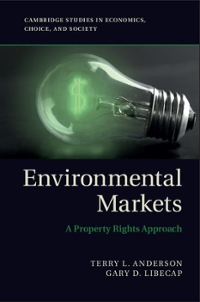Kindly explain these attachments.
QUESTION 3 Throughout this question X], Xys ..., Xmy ... will be a sequence of random variables that are defined on the same sample space !. (a) Explain what is meant by each of the following, stating which (if any) implies the other: (i) X., converges to X in L', (ii) X. converges to X in distribution. [6 marks] (b) Assume, in addition, that X1, X2, .... X., ... are independent and identically dis- tributed, with each having finite mean = p. Thus, as a consequence of the weak law of large numbers, the random variable M. = (X, + X2 + ... + X,) converges in dis- tribution to u as n + co. Use this fact to sketch the graph of lim, + V.(x), where V. is the distribution function of M.. [5 marks] (c) For the remainder of this question X1, X2, ..., Na, .. . will be a sequence of independent, identically distributed, exponential random variables with parameter A > 0. That is, each X, has density function f(x) = de As if x 2 0 and zero otherwise. If F. denotes the distribution function of the sum X, + X2 + ... + X,, do the following: (i) Fix r E R. By conditioning the event {Xi + X2+ ... + Xn+1 5 x} by the values of Xmel, or otherwise, show that Fat(x) := P[X, + X2+ ... + Xn+ Sx] = / F.(x - v)f(u)dy: [6 marks] (ii) Use the change of variable u(y) = (x -y) to rewrite the formula for F.+1(r) given in part (i) ; [3 marks] (iii) Prove by induction on n that F.(x) = [1 - eds Er , (Ar)/j!] if x 2 0 and zero otherwise. Hint: For the induction step, use the formula for F.+1(x) that you obtained in part (ii) ; [8 marks] (iv) Explain how the function . (defined in part (b)) is related to F, and, hence using part (b), determine lim, . "Am Ey , (Anr)'/j!, for all non-negative r # 1/1. [5 marks]2. Indifference curves. Assume that the consumer purchases only two goods, x and y. Based on the information in each of the following parts, sketch a plausible set of indifference curves (that is, draw at least two curves, and indicate the direction of higher utility). (a) Nomis enjoys muffins (x) and chai latte (y) if they are consumed together. (b) Tra likes chocolate (x), but he hates broccoli (y). (c) Aras likes steaks (x), but she doesn't care one way or the other about apples (y). (d) Fernando always buys five Polo-shirts (x) with every pair of jeans (y).An institution has a liability to pay $15,000 per annum, half-yearly in arrears, forever. (i) Calculate the present value and volatility of the liability at 8% pa effective. [6] (ii) Calculate the duration of the liability at 8% pa effective. [1] The following two stocks are available for investment: (A) A special 5-year stock, redeemable at par, that pays a coupon of 5 per 100 nominal at the end of the first year rising, by 2% pa compound, to 5 x1.02# at the end of the fifth year. (B) An n-year zero-coupon bond, redeemable at par. The institution chooses to invest equal amounts of cash in Stock A and Stock B. (iii) If the institution requires that the duration of the assets must equal the duration of the liabilities, show that n, the term of the zero-coupon bond, must equal 22 years if interest rates are 8% pa effective. [8] (iv) Without doing any further calculations, explain whether the institution has managed to implement an immunisation strategy. [2] [Total 17]An institution has a liability to pay $15,000 per annum, half-yearly in arrears, forever. (i) Calculate the present value and volatility of the liability at 8% pa effective. [6] (ii) Calculate the duration of the liability at 8% pa effective. [1] The following two stocks are available for investment: (A) A special 5-year stock, redeemable at par, that pays a coupon of 5 per 100 nominal at the end of the first year rising, by 2% pa compound, to 5 x1.02# at the end of the fifth year. (B) An n-year zero-coupon bond, redeemable at par. The institution chooses to invest equal amounts of cash in Stock A and Stock B. (iii) If the institution requires that the duration of the assets must equal the duration of the liabilities, show that n, the term of the zero-coupon bond, must equal 22 years if interest rates are 8% pa effective. [8] (iv) Without doing any further calculations, explain whether the institution has managed to implement an immunisation strategy. [2] [Total 17]d. What is the probability that more than 5% of the 750 units will be returned for service? e. Would it be unusual if in a random sample of 750 units, 5% were returned for service & why? 1. it has been found that the repair cost ( to the company) for the products returned averages $350 per unit returned. An engineering change has been suggested that will reduce the defect rate from 10% to 4%, but this engineering change will add $5 to the cost of each unit produced. Due to competitive forces, there is no opportunity to rabe prices to recover the additional cost. If the decision to adopt the engineering change is driven by financial considerations only, should the company make the engineering change or not (justify your decision)










